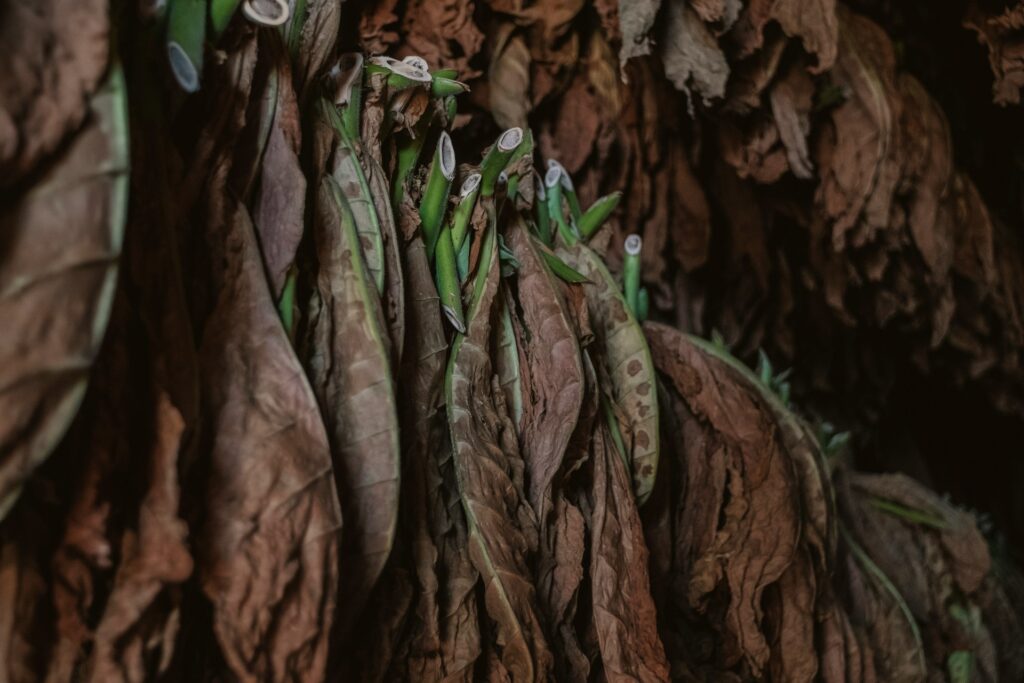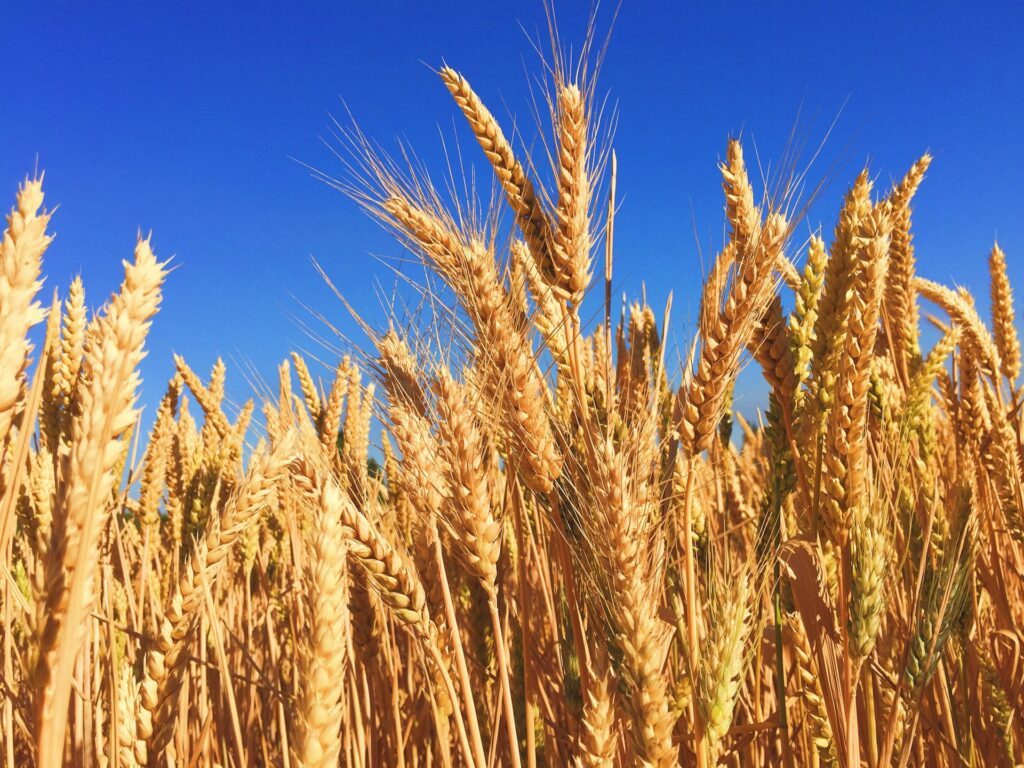It’s easy to assume plants are passive—just rooted greenery growing quietly in the background.

However, many species have evolved in ways that directly influence human desires, emotions, and habits. Whether through scent, beauty, chemistry or sheer usefulness, these plants shape our behaviour in ways that benefit them just as much as us.
1. Cannabis

Originally evolving cannabinoids to deter predators and protect itself from UV radiation, the cannabis plant ended up with a chemical cocktail that directly affects human perception, mood, and appetite. Over time, humans began cultivating it intentionally—not just for textiles and oil, but for its psychoactive properties.
This relationship has resulted in one of the widest global distributions of any plant originally native to Central Asia. Through chemical manipulation, it’s secured a permanent spot in agriculture, medicine, and human culture—thanks largely to how it hijacks the brain’s reward system.
2. Tobacco

Tobacco plants evolved nicotine as a pesticide to protect against insects. But in humans, nicotine triggers dopamine release, creating rapid psychological dependence. Once early humans discovered this effect, tobacco’s path was set—cultivated across continents, ritualised, industrialised, and woven into entire economies.
It’s a prime example of a plant “hacking” human reward systems. Despite full awareness of its health risks, its influence on behaviour remains potent—ensuring its long-term survival through widespread farming and cultural entrenchment.
3. Coffee

The coffee plant’s caffeine-laced seeds weren’t meant for humans—they evolved to protect against herbivores and suppress rival plant growth in the soil. But caffeine in humans triggers alertness, sociability, and a feeling of reward, making coffee one of the most traded commodities on Earth.
By altering our energy and focus, coffee has become embedded in global culture. We grow it, trade it, and revolve morning routines around it. It’s hard to think of another plant that’s shaped daily human behaviour quite so thoroughly, all by leveraging one powerful alkaloid.
4. Wheat

Wheat didn’t start out as the global grain it is today—it was a wild grass. But its seeds were easy to harvest, store, and plant, and as early humans settled, they became more reliant on it. Over time, wheat began shaping not only our diets but our entire way of life.
By offering reliable calories, wheat helped push humans toward agriculture, cities, and eventually civilisation. In return, we’ve spread it to every corner of the planet. Its manipulation isn’t chemical—it’s practical. But its hold on human systems is as strong as any narcotic’s.
5. Chili Peppers

Capsaicin, the chemical that gives chili peppers their heat, evolved to deter mammals from eating them. Ironically, humans fell in love with the burn. The pain triggers endorphin and adrenaline release, giving a mild rush that becomes oddly addictive to many.
This backwards adaptation—where a defence mechanism became a selling point—has led to chili peppers being cultivated far beyond their native regions. Humans now breed them to be hotter, stronger, and more varied, giving the plant an enormous evolutionary win through sensory manipulation.
6. Apples

Wild apples were once small, sour and unappealing to humans. But certain trees naturally produced larger, sweeter fruit. We found those ones irresistible, and through selective cultivation, we transformed the apple into the globally beloved fruit it is now.
This mutual benefit—humans get sugar and fibre, apples get spread and protected—has ensured its worldwide success. The apple’s appeal lies not just in its sweetness, but in its uncanny ability to seem wholesome, familiar, and symbolic—used in everything from myth to marketing.
7. Cocoa (Cacao Tree)

The cacao tree’s bitter seeds were never meant to be delicious. But once humans discovered how to ferment, dry, and roast them, chocolate was born—and with it, a global obsession. The chemicals in cocoa, including theobromine and phenylethylamine, subtly affect human mood and energy levels.
Today, entire economies are shaped by cacao cultivation. Its influence on human emotion has made it a romantic symbol, a stress reliever, and a comfort ritual—all while ensuring that we continue to plant, protect, and promote its growth.
8. Sugarcane

Like many grasses, sugarcane evolved high sugar content as a fast energy source for growth. But humans found its sweetness irresistible. Once refined, sugar went from novelty to necessity—driving trade routes, colonisation, and even wars.
Its biochemical lure is simple but effective: sugar taps into the brain’s most primal reward circuits. What began as a trait for survival turned into an empire built on cravings, dependence, and near-universal human consumption.
9. Lavender

Lavender didn’t evolve for human self-care rituals—it developed its scent as a defence against pests and as a way to attract pollinators. But in humans, those same compounds (mainly linalool) create a calming effect that’s now harnessed in oils, teas, and sleep aids.
This subtle influence on stress and mood has turned lavender into more than a plant—it’s a marketing powerhouse. We’ve spread it far and wide for its ability to soothe us, which in turn benefits the plant by ensuring its propagation in gardens, fields, and wellness routines.
10. Tea (Camellia sinensis)

Tea leaves contain caffeine and L-theanine—a combination that promotes alertness without the jittery crash associated with other stimulants. This unique chemical pairing has made tea a cornerstone of culture across Asia, Europe, and beyond.
Its effect on mood, cognition, and ritual is profound. People drink tea to focus, relax, connect, or reflect. As a result, we’ve cultivated its parent plant with care and precision for centuries, adapting it to our lifestyles—while it quietly continues to thrive in return.